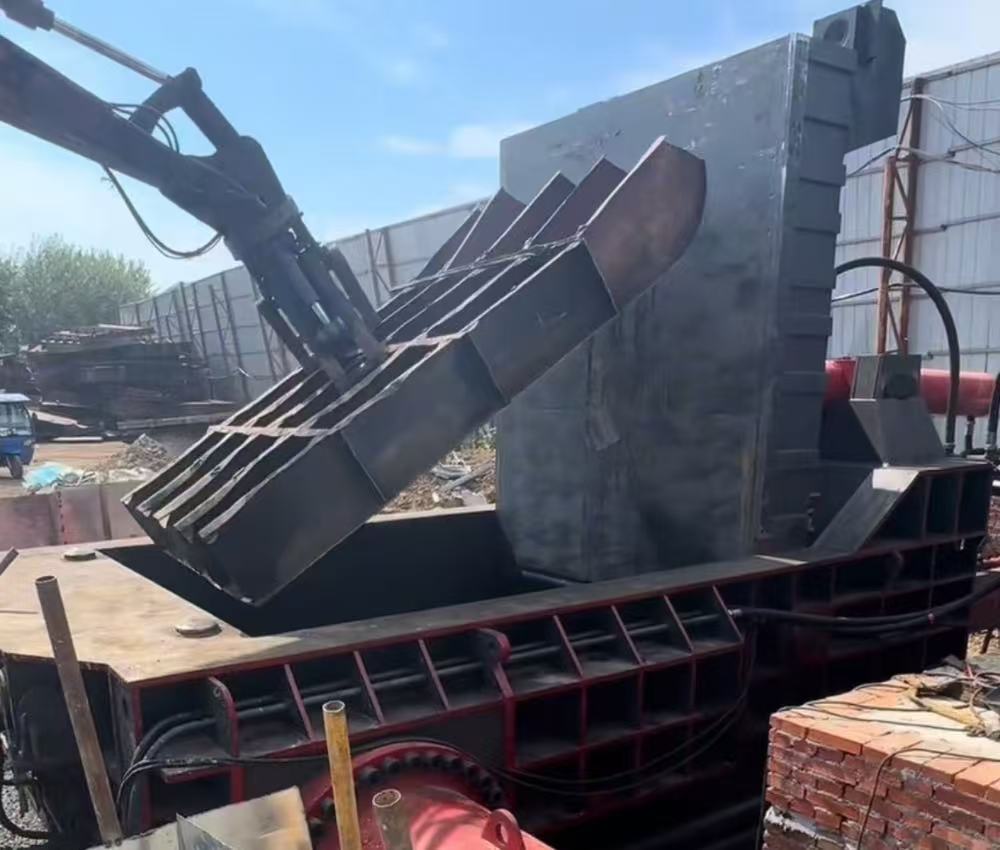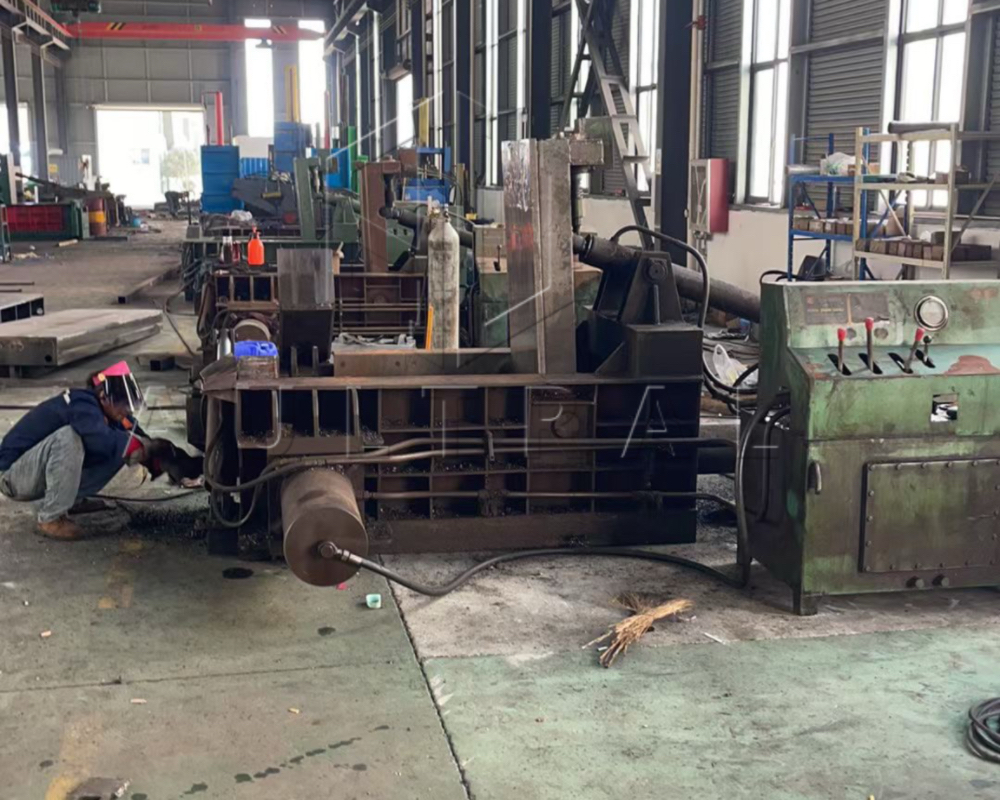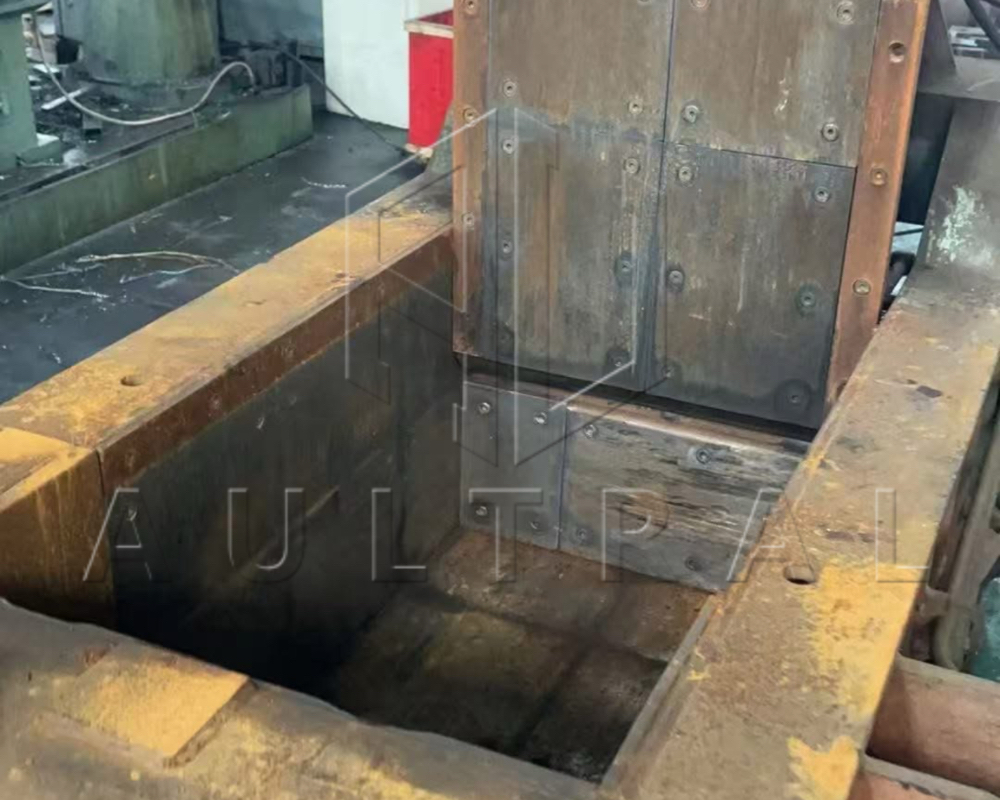What Is A Used Horizontal Metal Baler Machine?
A horizontal metal baler machine is a powerful hydraulic equipment designed to compress various kinds of scrap metals—such as aluminum, steel, copper, and iron—into compact bales for easy storage, transportation, and recycling. Unlike vertical balers, which are suitable for smaller volumes, horizontal balers are built for large-scale industrial operations and continuous feeding.
When we refer to a used horizontal metal baler, it means the machine has been previously owned or operated but is still in good working condition. These machines are often refurbished, maintained, and tested before being resold. Many recycling centers, metal processing plants, and scrap yards prefer used models because they deliver the same efficiency as new machines at a much lower cost.
Why Choose A Used Horizontal Metal Baler Machine?

Purchasing a used horizontal metal baler can be a smart and strategic decision for both new and experienced recycling businesses. Here are several reasons why:
1. Cost-Effective Investment
A new horizontal baler can be quite expensive, especially high-tonnage models. Used machines, on the other hand, cost significantly less—often 40–70% cheaper than brand-new units. This allows companies to save capital for other investments, such as conveyors, crushers, or upgraded hydraulic systems.
2. Proven Performance
Most second-hand balers come from reliable brands known for durability and stable performance. If the previous owner maintained it properly, the machine can continue working efficiently for many more years. A well-kept used baler can often perform almost like new with regular servicing.
3. Faster Availability
New hydraulic balers may require several months of manufacturing and shipping time. However, used machines are usually available immediately. This helps companies start production quickly without waiting for long lead times.
4. Environmentally Friendly Choice
Choosing a used baler is also an eco-conscious decision. It extends the machine’s life cycle and reduces waste associated with manufacturing new equipment. In the recycling industry, sustainability is not just a buzzword—it’s a business value.
5. Low Depreciation Risk
Just like cars, new industrial machines depreciate quickly in the first few years. Used machines have already passed that stage, meaning their resale value remains more stable if you decide to upgrade or sell in the future.
How To Use A Used Horizontal Metal Baler Machine

Operating a used metal baler is not very different from using a new one, but safety and maintenance become even more important. Here’s a general step-by-step guide:
1. Check And Prepare The Machine
Before starting, inspect the hydraulic system, oil level, electrical components, and control panel. Make sure all safety guards and emergency stop buttons are functional. If the machine was unused for some time, test the system pressure and lubrication.
2. Feed The Scrap Metal
Load the scrap metal into the feeding hopper or conveyor. Horizontal balers can handle continuous feeding, so you can keep adding material while the machine works. Ensure that metals are free from explosive or flammable residues.
3. Compression And Baling
Activate the hydraulic system through the control panel. The main cylinder pushes the material into the compression chamber, applying high pressure to form dense, rectangular bales. Depending on the model, the pressure can range from 100 to 1000 tons.
4. Bale Ejection
Once the compression cycle is completed, the bale is automatically ejected through a side or front gate. Many models include automatic tying or strapping systems to secure the bale.
5. Regular Maintenance
Daily and weekly maintenance is crucial for a used baler. Clean the chamber, check for oil leaks, tighten bolts, and inspect hoses and valves. Replace hydraulic oil every few months according to the manufacturer’s recommendations.
Key Features To Look For In A Used Horizontal Metal Baler

When buying a second-hand baler, careful inspection and selection are essential. Here are the most important factors to consider:
1. Hydraulic Power And Pressure
The heart of the baler lies in its hydraulic system. Check the tonnage and cylinder condition. A higher tonnage means stronger compression, suitable for heavier metals like steel and iron.
2. Chamber Size
The size of the compression chamber determines how large or small your bales will be. Choose a size that fits your scrap type and transportation needs. A common chamber size for industrial use is around 2000mm x 1400mm x 800mm.
3. Bale Density And Weight
Look for a machine that can produce uniform, dense bales. Ideal bale weight depends on your materials, but generally ranges from 200kg to over 1000kg per bale.
4. Automation Level
Some used balers come with semi-automatic or fully automatic systems, including conveyors, PLC controls, and automatic tying. More automation means higher efficiency but also higher cost.
5. Machine Brand And Model
Choose reputable brands known for reliability, such as Jiangsu Wanshida, Shengbo, or Y81 series hydraulic balers. These models are widely used and have easy access to spare parts and maintenance support.
6. Age And Maintenance Record
Ask for the machine’s history—how long it has been used, maintenance logs, and whether any major components have been replaced. A well-documented service record indicates good machine care.
7. Electrical System Compatibility
Ensure the machine’s voltage and frequency match your country’s power supply (e.g., 380V/50Hz). Modifying electrical systems can be costly and risky if not handled properly.
Tips For Buying A Reliable Used Baler
-
Inspect In Person Or Request Videos – Always check the actual condition through photos or live videos to verify functionality.
-
Ask For Test Runs – A running test helps you evaluate hydraulic strength, noise level, and cycle speed.
-
Work With Trusted Suppliers – Choose experienced sellers who can provide after-sales service, spare parts, and installation guidance.
-
Compare Prices And Specifications – Don’t just focus on price; balance cost with machine condition and features.
-
Check CE Or ISO Certifications – Certified machines ensure better quality and safer operation.
Common Applications Of Horizontal Metal Balers
Used horizontal metal balers are widely applied in:
-
Scrap metal recycling plants
-
Car dismantling and auto parts processing centers
-
Steel mills and foundries
-
Aluminum and copper recycling yards
-
Waste management and environmental companies
They can compress light scrap, aluminum cans, metal chips, and heavy structural steel into uniform bales that are easy to handle and transport to smelting facilities.
Conclusion
A used horizontal metal baler machine is an ideal solution for companies looking to enhance their scrap recycling efficiency without heavy investment. It delivers the same strong compression, high productivity, and durability as new machines, while significantly lowering costs and lead time.
By inspecting key features like hydraulic pressure, chamber size, and automation level—and choosing a trustworthy supplier—you can find a used baler that performs reliably for years to come.
Whether you are a small recycling workshop or a large industrial scrap yard, investing in a used horizontal baler is a smart, sustainable, and profitable decision for the future of your business.
